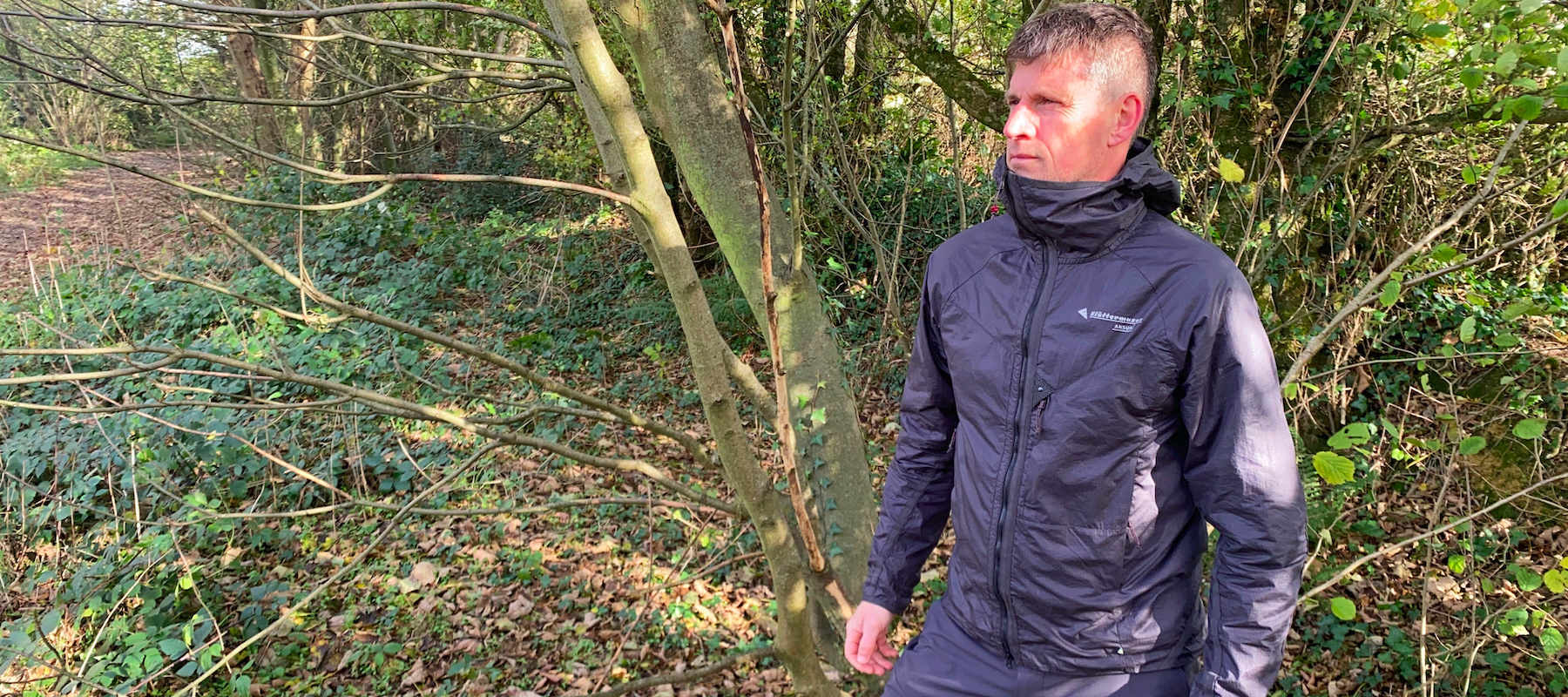Advnture Verdict
With or without a hood, the Ansur Klättermusen wind jacket is a stylish and beautifully designed piece of technical apparel, which is very windproof while remaining highly breathable. It’s exceptionally lightweight, and very easy to pack and carry, but it comes with a premium price tag and there are some serious limitations. Because its cut is very trim, there’s a limit to how much you can wear underneath it, which is an important consideration as conditions grow colder, and the cotton construction is a real concern in wet conditions.
Pros
- +
Highly windproof
- +
Very lightweight
- +
Extremely packable
- +
High neck and low back
Cons
- -
Cotton won’t keep you warm when wet, no matter how green and fancy it is
- -
Shallow pockets
- -
Pricey
You can trust Advnture
Klättermusen Ansur hooded windproof jacket: first impressions
As with pretty much every piece of Klättermusen apparel I’ve ever tested or just drooled over, I thought the Ansur windproof jacket was a gorgeous piece of kit the moment I saw it. The Swedish brand, founded in the Scandinavian mountain resort of Åre almost 50 years ago, is renowned for producing peak-performance gear that looks ace and oozes alpinist style, and this classy wind smock is no exception.
• List price: $299 (US) / £269 (UK)
• Gender specification: Men’s / Women’s
• Sizes: Men’s: XS-XXL; Women’s: XXS-XL
• Windproof rating: MFR8 (‘excellent’)
• Materials: Organic cotton (100%)
• Weight: Men’s: 307g / 10.8oz; Women’s: 278g / 9.8oz
• Colors: Men’s: Meadow Green / Rose Red / Raven Black / Stone Blue / Swamp Green-Silver Green; women’s: Dove Raven / Dusty Green / Midnight Blue / Raven Black / Raven Burnt / Raven Copper / Rose Red / Swamp Green-Silver Green
• Compatibility: Hiking, trekking, walking, climbing, backpacking
Extremely lightweight, the Ansur (available direct from Klättermusen) is primarily intended to protect the wearer from the wind, while offering some protection from the rain at the same time. Made entirely from eco-friendly organic Katla cotton, it is designed to be minimalist and easy to stuff into the pocket of a backpack or daypack, barely noticeable in terms of weight and the room it takes up, but ever-ready to be deployed when required.
But, wait… cotton? Isn’t that regarded as a massive no-no fabric for outdoor – and especially mountain-minded – clothing? Generally speaking, yes. We strongly advise against wearing cotton in the hills and on the trails, especially at elevation or in adverse conditions, which are exactly the sort of circumstances when you’re most likely to reach for the Ansur jacket.

However, Klättermusen know what they’re doing. According to the brand the cotton used in the Ansur has been “subjected to pressure and heat to resemble geological compaction”. This produces, apparently, a fabric that is, “windproof, water repellant and highly breathable”. Ripstop has also been added to increase the strength and longevity of the jacket.
According to Klättermusen’s own Mass Flow Resistance System the Ansur has a rating of MFR8, which makes it very windproof, but still breathable (MFR ratings go up to 10, but breathability decreases at the very top end).
So, how does this all stack up on the trails and in the hills? I’ve been putting the Ansur jacket through its paces during a series of autumnal storms to find out.
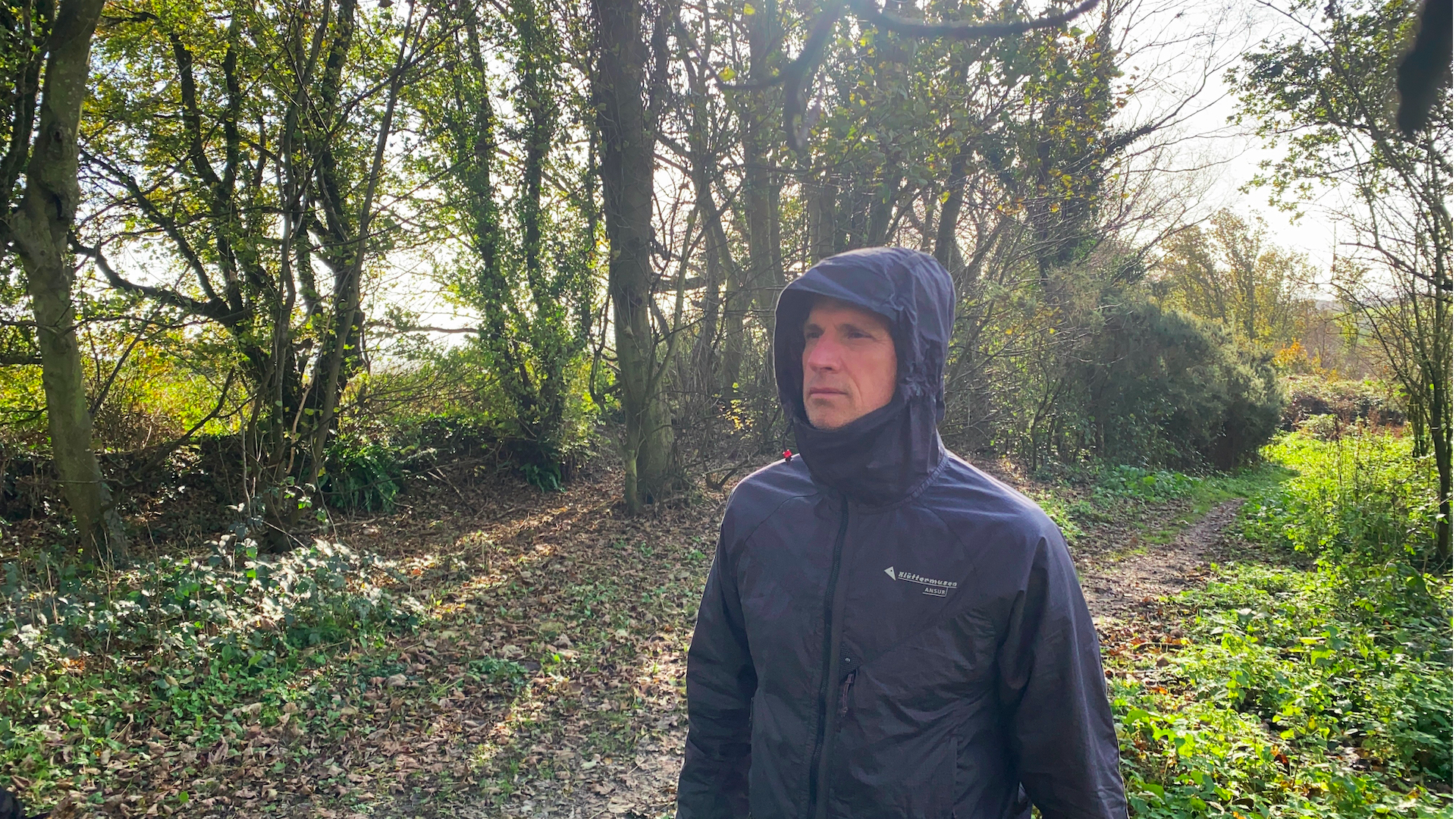
You can choose between a hooded and a non-hooded version of the Klättermusen Ansur windproof jacket. The sans-hood jacket is slightly cheaper ($279 / £249) and lighter (270g / 9.5g in a men’s medium). I’ve been testing the version with a lid, but I can see arguments for both styles.
Having no hood keeps bulk and carry weight down (albeit by a tiny amount) and no lid means there’s one fewer thing to have flapping around. Plus the thin hoods on many lightweight windproof jackets make you look pretty dumb, and if conditions are really bad, you’re likely to need a full waterproof shell for your outer layer anyway. On the other hand, the weight savings are so small that I think it’s worth the penalty in order to shield your ears from wind bite on blustery-but-dry days. On balance I come down in favor of the hooded version, especially because the lid on the Ansur actually looks fairly decent.
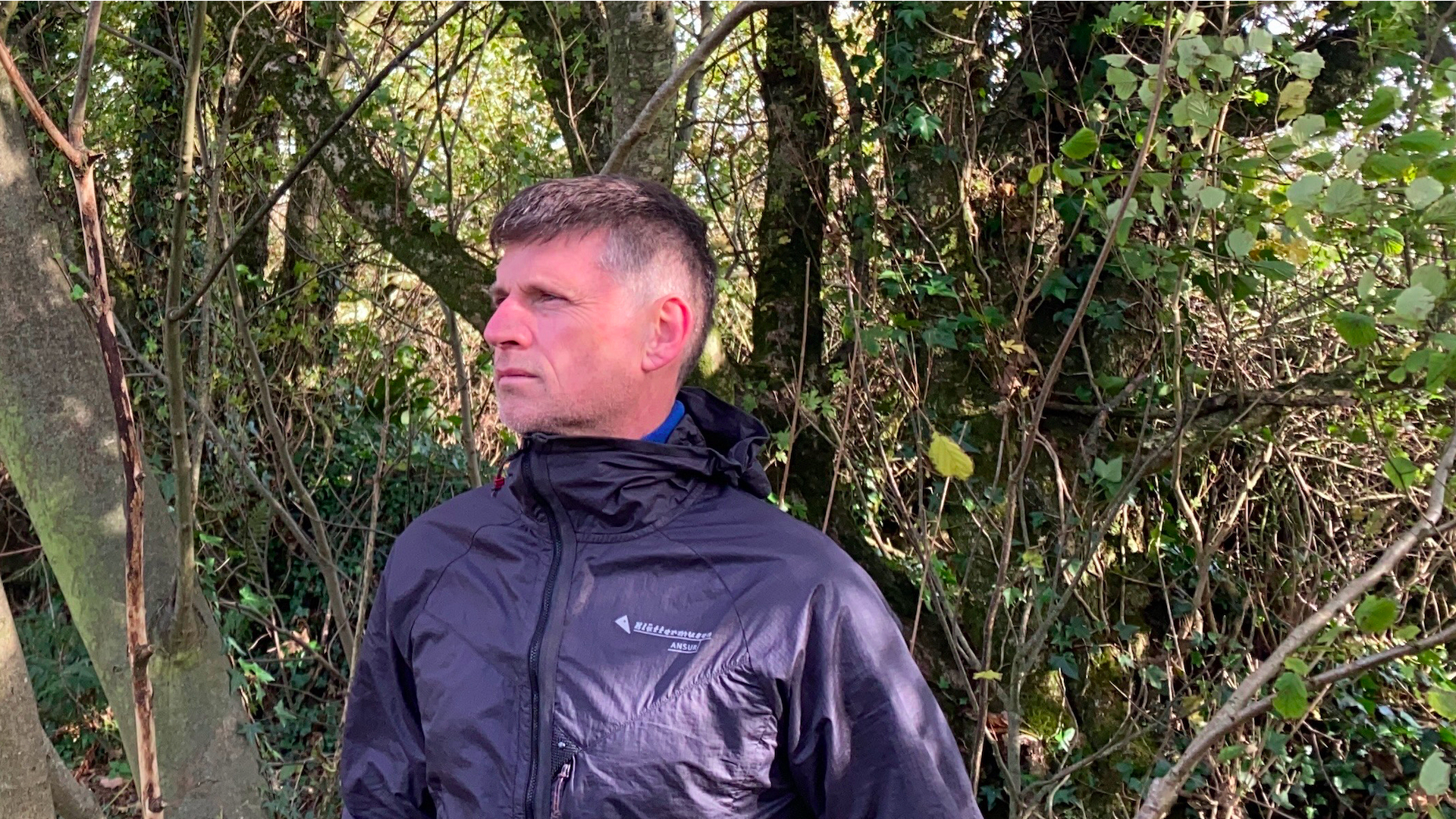
On both versions, the neck is very high, with a cool-looking, off-set, angled zip, and the back extends below the top of your bum, both of which are deliberate design elements to keep breezes out – primary purpose of this jacket. I especially love the off-center zip on the neck, which helps to avoid beard and skin snags (the zip garage further prevents such painful incidents from happening) and adds a stylish swagger.
There are three pockets on the Klättermusen Ansur windproof, one on each side and a third on the left chest. All of them zip shut, and there are long cord pulls on each of the zippers so they can be opened and shut with cold hands and/or when you have gloves on.
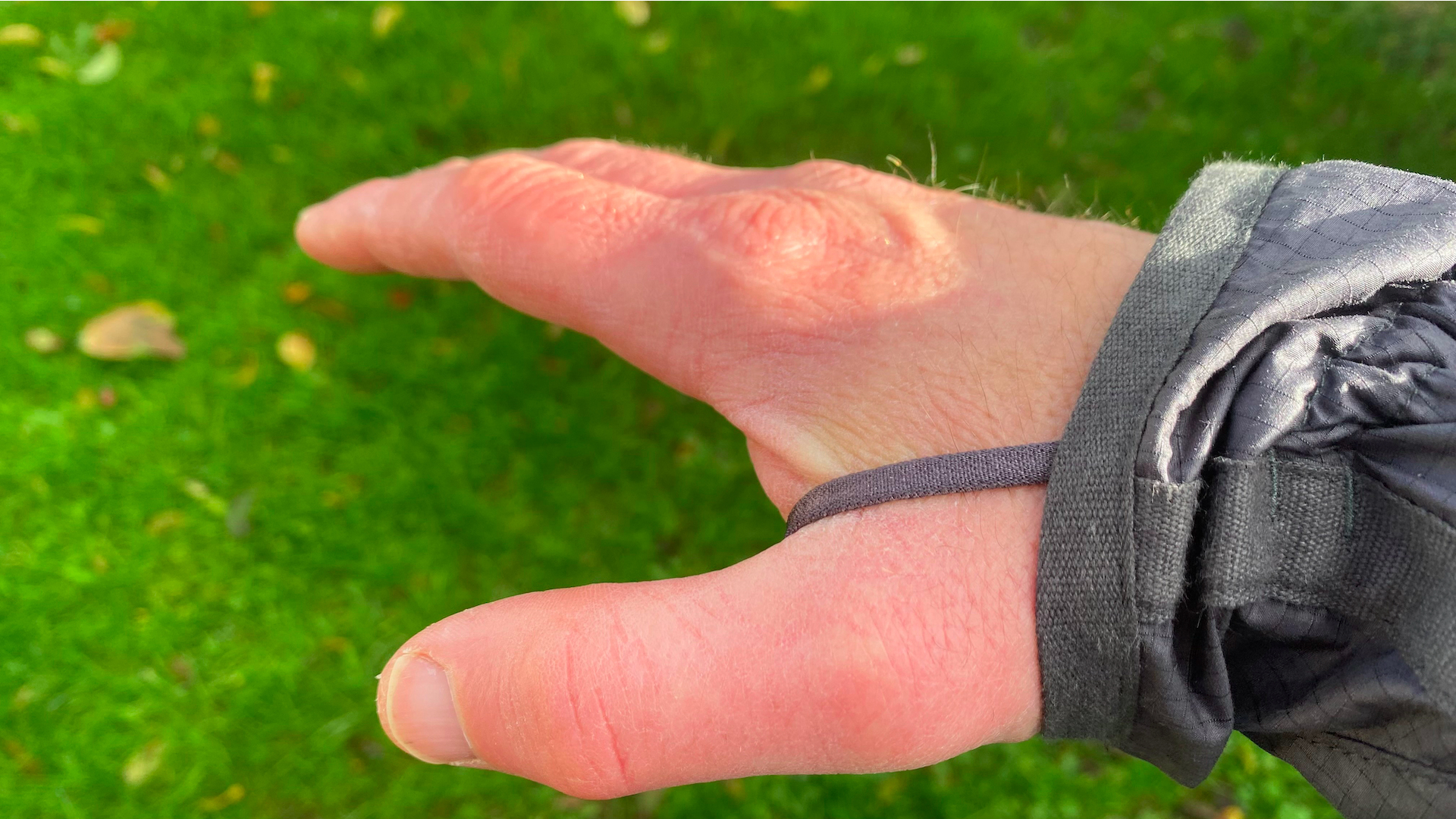
The waist can be pulled in tight with a draw cord, although there’s no toggle to secure it, and the sleeves can’t be tightened either. However, there are hidden thumb hoops in the sleeves, which keep the cuffs firmly in place and cut out the risk of accidentally exposed skin if you’re wearing gloves. The hood can be tightened around your head and face with an easy-to-use toggle.
One small annoyance I have with the Ansur is that the two side pockets are very shallow. In fairness, this isn’t a jacket that you’re supposed to stuff with trail mix and other miscellaneous items; it’s designed to be donned when the wind is cutting across the hillsides and you need protection from the chill. So these pockets are positioned to be accessible when you’re wearing a backpack or harness, and that’s probably more important than having a cavernous storage capacity. The vertical pocket on the chest is slightly larger; big enough to take a smartphone.
Klättermusen Ansur hooded windproof jacket: on the trails

I’ve been testing the Klättermusen Ansur hooded windproof jacket out on the windswept tors of Dartmoor and along the exposed trails that skirt the south coast of England this fall, notably during Storm Ciarán, when I really appreciated its ability to keep the gusts out.
The first thing to note is the lack of excess material on this trimly cut jacket. In many ways this is great (having baggy bits flapping around is annoying and inefficient when you’re walking against the wind), but it’s important to know that the sizing on the Ansur is really not very generous. I struggled to get my ‘large’ jacket on over anything beyond a base layer and a midweight fleece. This is fine in the fall, but come mid winter, when you’ll definitely need a chunkier mid layer, this might be a bit of an issue – there’s no way you’ll get it on over even a very small puffer. If you’re someone who likes to layer up like an onion, and this is going to be your outer layer (which is what it’s designed to be), then you might want to opt for a size up from your usual.
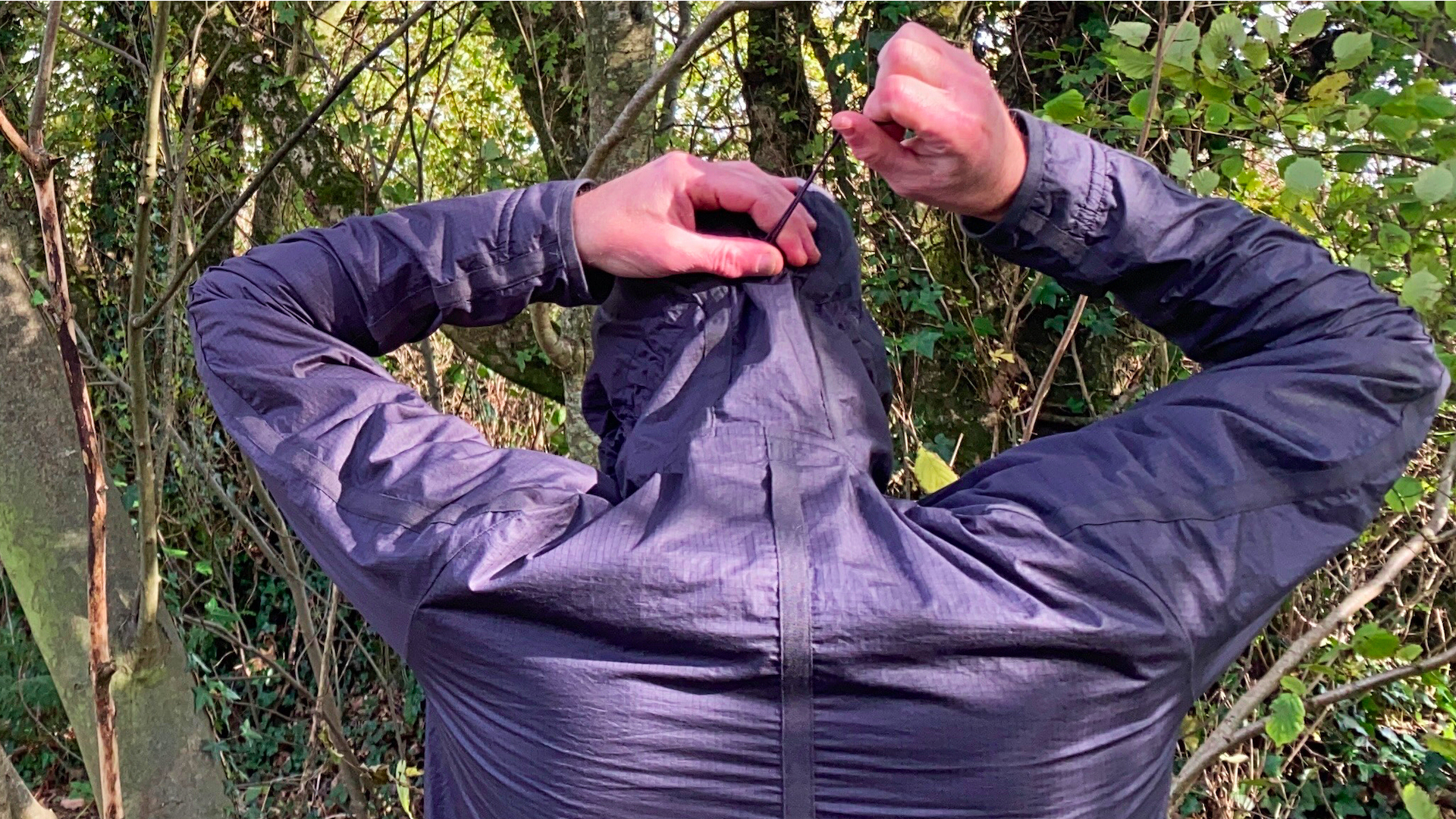
While this reduces the Ansur jacket’s usefulness in some circumstances, it performs its main role perfectly during the less frigid conditions of fall. On test I found that it kept storm-driven winds out brilliantly, and it also feels pretty breathable at the same time – I certainly haven’t experienced any significant amount of moisture buildup on the inside.
The ripstop material is really robust, and the seams are heavily reinforced on this jacket. Despite its lightweight construction, the build quality seems excellent, and I have complete confidence that it will last for many years on the hills.
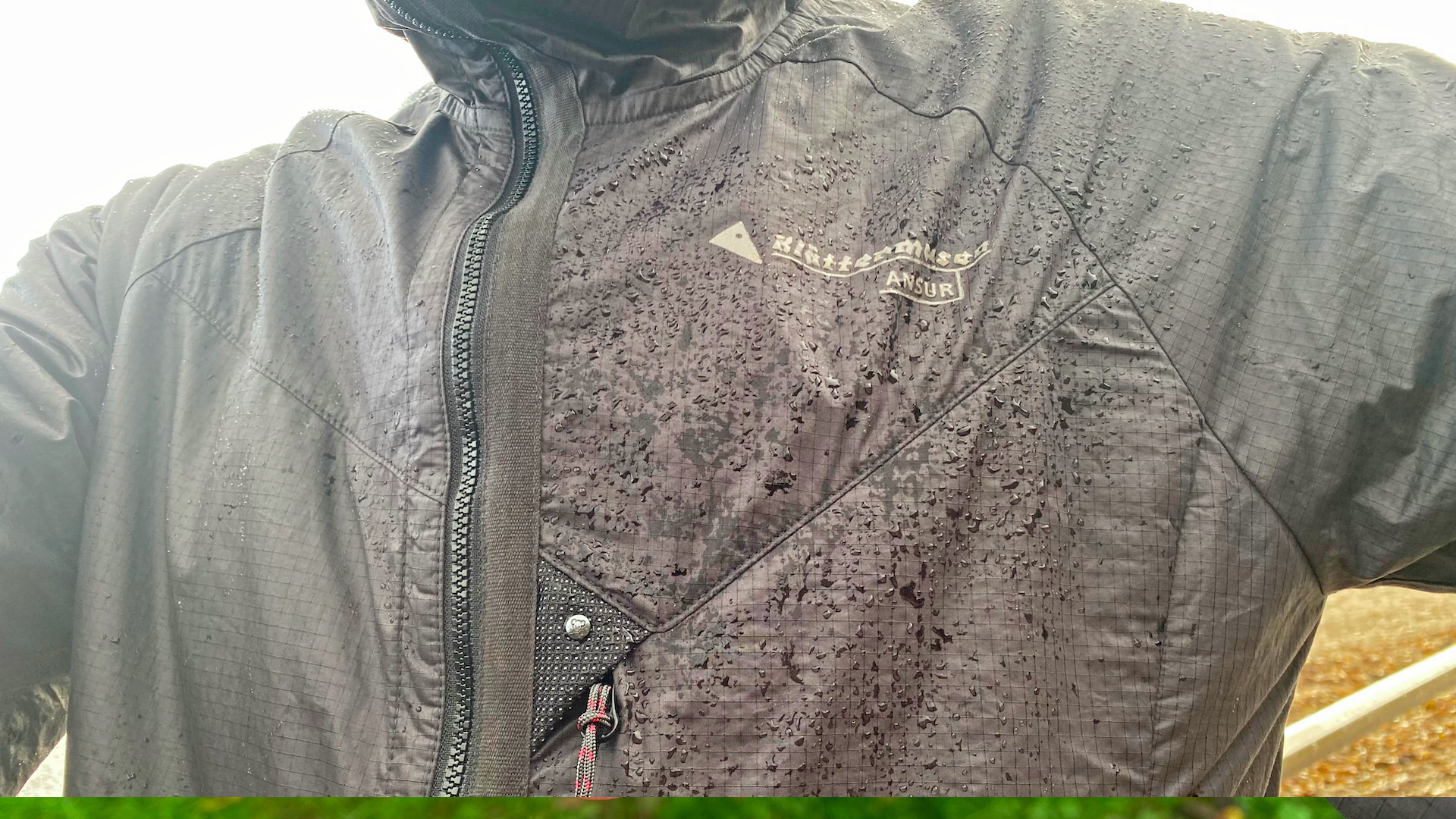
This jacket doesn’t claim to be fully waterproof, but it does boast a decent degree of repellency, and during light showers rain has beaded up and rolled straight off the outer fabric. So far, so good. My concern, though, is what happens in the event of the Ansur jacket fully wetting out, or the effectiveness of the water repellency deteriorating (which will happen over time). In these circumstances I would not want to be clad in a cotton jacket in cold conditions.
No matter how good the jacket looks, or how environmentally friendly the source material is, I still have my doubts about whether cotton really has a place in the mountains. For my money, this is a good jacket for keeping the wind out when you’re walking in blustery but reliably dry conditions, on sub-alpine trails between spring and fall.
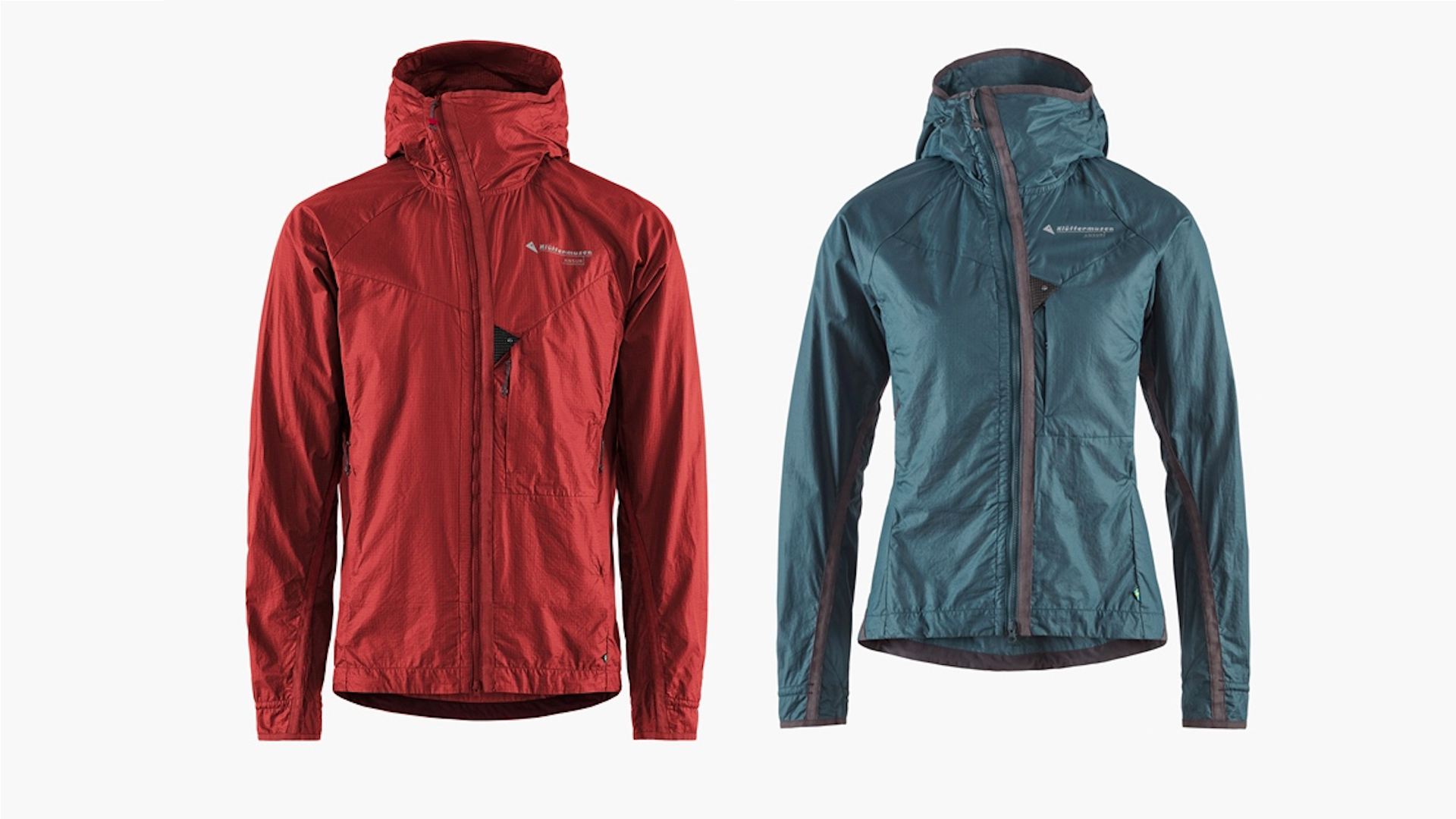

Author of Caving, Canyoning, Coasteering…, a recently released book about all kinds of outdoor adventures around Britain, Pat has spent 20 years pursuing stories involving boots, bikes, boats, beers and bruises. En route he’s canoed Canada’s Yukon River, climbed Mont Blanc and Kilimanjaro, skied and mountain biked through the Norwegian Alps, run an ultra across the roof of Mauritius, and set short-lived records for trail-running Australia’s highest peaks and New Zealand’s Great Walks. He’s authored walking guides to Devon and Dorset, and once wrote a whole book about Toilets for Lonely Planet. Follow Pat’s escapades on Strava here and Instagram here.
